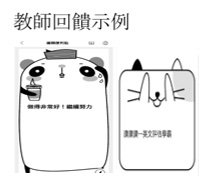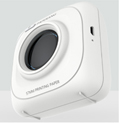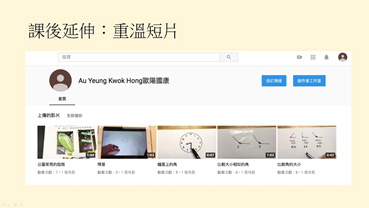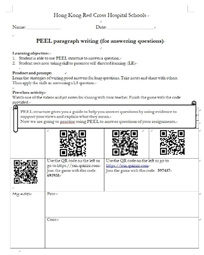Routines in hospital wards and students’ physical conditions may vary from day to day, which would directly affect students’ learning progress. During the school hours, students may receive medical procedures and their physical conditions are unpredictable. Therefore, fixed school hours may not always be the most appropriate time for lessons. How can students learn at the most appropriate time? How can teachers use the teaching time most effectively with a certain number of students in wards? Motivating students toward self-directed learning is one of the solutions.
To promote self-directed learning, our school prepared teachers by inviting the president and the committee members of the FlippEducators@HK as the speakers in the training workshops. The workshops helped our teachers understand the concepts of flipped classroom, and equipped them with knowledge and skills needed for e-learning, such as multimedia materials and applications, etc. With the training provided, our teachers could facilitate students to establish a habit of self-directed learning.
The curriculum of our school is designed with the concept of flipped classroom. Pre-task and extended-learning materials are included in each school-based teaching plan, so that students can study prior the lesson and explore the relevant topics after the lesson. It helps extend the duration of the learning period and allows teachers to focus on students' learning difficulties, or to discuss the content in-depth in the limited class time. Without the constraint of time, students are allowed to study depending on their physical conditions and practice self-directed learning. The flexibility of study time in flipped classroom resolves the limitation of school time.
E-learning is also a key strategy for promoting self-learning in our school. To engage students in learning and to raise their interests and motivations, Google Classroom, Kahoot, Nearpod, Quizizz, Quizlet, and other e-learning platforms are used in class. Students can study the materials repeatedly due to their needs while enjoying the process of self-directed learning.
Besides, teachers also focus on the evaluation and feedback in the teaching process. Through the use of self-assessment, teachers engage students in monitoring their own learning process, and make improvements based on their own observation. For students’ deeper impressions on the feedback, the Bluetooth portable printers (commonly known as "Paperang") are used for converting the oral feedback into written form.
Self-directed learning is beneficial to individual teaching, cater for learner diversity, and enhance the effectiveness of learning and teaching in hospital schools. We hope that our students can master the skills of self-directed learning, apply it to their studies, and become lifelong learners.





